Precision CNC Milling Services in China
China high-quality precision CNC milling services you can trust. Competitive pricing and fast lead times.
- Over 60 Certified Materials
- ±0.005mm Tight Tolerance
- Custom Finishes
- Lead times from 7 days
- Customer data security
Save 30% on average!

Precision CNC Milling Services From China
Searching for a dependable supplier of CNC-milled parts?
AT-Machining is the premier supplier of CNC-milled parts. Our experienced engineers, designers, and procurement units ensure that our services are provided efficiently and cost-effectively for all project needs ranging from prototypes to mass production runs.
All this, backed by high-tech milling centers with a wide range of finishing options, allows us to deliver top-notch quality quickly, reliably, and flexibly – perfect for your precision manufacturing requirements!




Our Maximum capabilities for CNC Milling
Experience unparalleled accuracy and quality in your prototyping and production runs with our cutting-edge 3 and 5-axis milling centers. Attain the highest performance standards while crafting intricate parts that fulfill even the most stringent requirements.
3-axis and 3+2-axis CNC Milling
3-axis and 3+2 axis CNC milling machines provide an economical solution for producing parts with simpler geometries. These systems offer a low cost of entry as compared to other machining processes, making them ideal choices where affordability is critical.
| Size | Metric units | Imperial units |
|---|---|---|
|
Max. part size for soft metals & plastics |
2000 x 1500 x 200 mm 1500 x 800 x 500 mm |
78.7 x 59.0 x 7.8 in 59.0 x 31.4 x 27.5 in |
|
Max. part for hard metals |
1200 x 800 x 500 mm |
47.2 x 31.4 x 19.6 in |
|
Min. feature size |
Ø 0.50 mm |
Ø 0.019 in |
5-axis CNC milling
5-axis CNC milling centers have the capability to deliver superior quality parts while markedly increasing efficiency. With fewer setups required, they offer a cost-effective solution for achieving complex geometries quickly and accurately.
| Size | Metric units | Imperial units |
|---|---|---|
|
Max. part size for all materials |
650 x 650 x 300 mm |
25.5 x 25.5 x 11.8 in |
|
Min. feature size |
Ø 0.50 mm |
Ø 0.019 in |
CNC Milling General Tolearances
AT-Machining provides a variety of CNC machining tolerances tailored to your specific design needs, including GD&T callouts. Depending on your part’s geometry and selected material, we accommodate standard and custom thread sizes, achieving tolerances up to ±0.001″. Our default CNC milling tolerances for metals follow ISO 2768-m, while for plastics, we adhere to ISO 2768-c.
| Type | Tolerance |
|---|---|
|
Linear Dimension |
+/- 0.025 mm +/- 0.001 inch |
|
Hole Diameters (not reamed) |
+/- 0.025 mm +/- 0.001 inch |
|
Shaft Diameters |
+/- 0.025 mm +/- 0.001 inch |
|
Part Size Limit |
950 * 550 * 480 mm 37.0 * 21.5 * 18.5 inch |
Materials for CNC Machining Parts
AT offers a wide variety of materials for custom CNC machining, plastic, and metal, including but not limited to:
CNC Metals
Aluminum: Aluminum’s strength-to-weight ratio, affordability, and recyclability have made it widely used across industries worldwide.
Alloys: 6061-T6, 7075-T6, 2024, 5052, 6060, 5083, 2017, 6082
Finishing Options: Alodine, Anodizing Types II, III, III + PTFE, ENP, Media Blasting, Nickel Plating, Powder Coating, Tumble Polishing
Stainless steel: Stainless steel’s corrosion resistance and ductility make it ideal for long-term exposure to elements and easy shaping into different forms
Finishing Options: As machined, Bead Blasted, Polishing, Decorative Chrome Plating, Powder Coat, Nickel Plating, Gold Plating, Silver Plating
Alloys: SS303, Stainless Steel 304/304L, Stainless Steel 316/316L, Stainless Steel 17-4, Stainless Steel 416, etc.
Alloy Steel: Alloy steel is steel mixed with elements like manganese, nickel, and chromium to enhance its strength, hardness, corrosion resistance, and durability, tailored to meet specific application needs.
Alloy: AISI 1215, AISI 4140, AISI 4340, AISI 8620, AISI 4130
Finishing Option: Polishing, Plating, Painting, Powder Coating and etc.
Tool Steel: Tool steel is a type of high-carbon and high-alloy steel that is specifically designed to be used in the manufacture of cutting tools, dies, and molds. It is valued for its high hardness, wear resistance, and toughness, which make it suitable for applications where the tool is subjected to repeated impacts or stresses.
Alloy: A2 Tool Steel, D2 Tool Steel, O1 Tool Steel, S7 Tool Steel, M2 Tool Steel
Finishing Option: Bead/Sand Blast, Polishing, Plating, Painting, Powder Coating, Heat Treatment and etc.
Brass: Brass is an alloy of copper and zinc, especially metal material with more than 20% zinc content, which is the most commonly used metal material in cnc machining
Finishing Options: Nickel Plating, Bead Blasted, Gold Plating, Silver Plating
Alloy: C360, C260
Copper: Copper is a soft, malleable metal with excellent thermal and electrical conductivity, making it an essential material in many industries.
Grade: C10100, C11000, C12200, C14500, C17200
Finishing Option: Plating, Polishing
Titanium:Titanium has a low density and high strength, making it ideal for applications that require a strong yet lightweight material, such as aerospace, automotive, and biomedical industries. It is also highly resistant to corrosion and can withstand exposure to many chemicals and environments
Alloy: Ti-6Al-4V, Ti-6Al-2Sn-4Zr-2Mo, Ti-3Al-2.5V
Finishing Option: Polishing, Anodizing, Sandblasting, Chemical etching, Laser engraving and etc.
CNC Plastics
POM (Delrin/Acetal): High stiffness, good moisture resistance, high wear-resistance, and low friction, easy to machine
Color: White, black, brown
Grade: POM-C, POM-H, UV stabilized POM, Food-Grade POM
PMMA: PMMA is commonly known by the trade name “acrylic” or “plexiglass”. It is a lightweight and shatter-resistant material that is often used as a glass substitute in applications such as skylights, displays, signage, and lenses
Color: Transparency
Grade: Extruded PMMA, Cast PMMA, Impact-Modified PMMA, UV-Stabilized PMMA, Heat-Resistant PMMA
PEEK: PEEK is a high-performance engineering thermoplastic with excellent mechanical, chemical, and thermal properties, short for Polyether Ether Ketone
Color: Beige with no transparency
Grade: Unfilled PEEK, 30% glass-fiber reinforced PEEK, 30% carbon-fiber-reinforced PEEK, Bearing Grade PEEK
ABS: ABS is tough, rigid, and lightweight, making it an excellent material for use in applications such as automotive parts, toys, electronic housings, and consumer goods. It is also resistant to impact, chemicals, and heat, making it a popular choice for use in harsh environments
Color: ABS is naturally opaque and comes in a range of colors including black, white, and gray
Grade: General purpose ABS, Flame retardant ABS, High impact ABS, Heat-resistant ABS
Nylon: Nylon is a strong, durable, and elastic material that is commonly used in textiles like clothing and ropes. Its resistance to abrasion, chemicals, and moisture makes it popular for industrial applications, such as gears, bearings, and automotive components
Color: Nylon is often used in its natural off-white or slightly yellowish color
Grade: Nylon 6, Nylon 6/6, Nylon 11, Nylon 12
PTFE: PTFE(Teflon) is a high-performance plastic material known for its exceptional chemical resistance, low friction coefficient, and high-temperature resistance
Color: The color of PTFE is typically white or off-white
Grade:
PVC: PVC stands for polyvinyl chloride, which is a synthetic thermoplastic polymer that is widely used in various applications. PVC is a versatile material that can be rigid or flexible
Color: clear or opaque
Grade: UPVC, PPVC, CPVC
PEI: PEI has excellent mechanical, thermal, and electrical properties, as well as good chemical resistance
Color: Amber or brownish color
Grade: Unfilled PEI, Glass-Filled PEI, Carbon-Filled PEI, Ultem PEI
Surface Finishes for CNC Machined Parts
AT-Machining offers a wide selection of surface finishes to improve the surface qualities of CNC-turned parts. The surface finishes applied after machining can change the appearance, surface roughness, hardness, and chemical resistance of the produced parts.
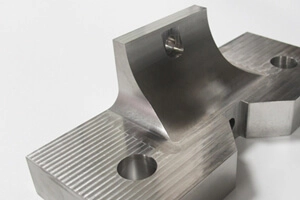
As machined (Ra 3.2μm / Ra 126μin)
This finishing option with the shortest turnaround time. Parts have visible tool marks and potentially sharp edges and burrs, which can be removed upon request.
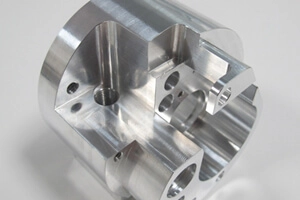
Smooth machining (Ra 1.6μm / Ra 63μin)
Smooth machining is similar to a ‘As machined’ finish, but with less visible machine marks. Parts are machined at a lower feed rate, with no hand polishing.
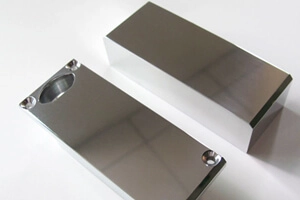
Polishing (Ra 0.8μm / Ra 32μin or better)
Polishing is the process of creating a smooth and shiny surface by rubbing it or by applying a chemical treatment.
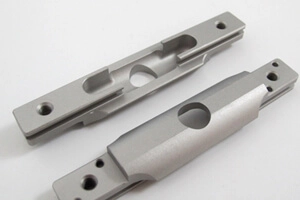
Bead Blasting
Machined parts are bead blasted with glass beads which results in a uniform grainy texture and reduced machining marks.
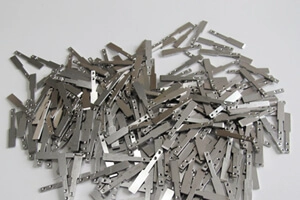
Tumbled
It is a process that tumbles vibrating media on machined parts to remove sharp edges and burrs.
Tumbling can be used to remove machine marks from exterior surfaces.

Bead blasted + Anodizing type II
The parts are bead blasted to #120 grit before being anodized type II—ideal for increasing the aluminum part’s corrosion resistance and cosmetic effects.
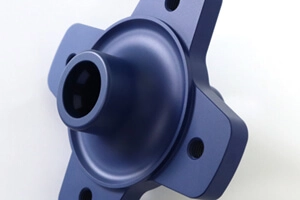
Bead blasted + Anodized type III (Hardcoat)
The parts are bead blasted to #120 grit before being anodized type III. Type III (Hard Coat) is thicker and adds a wear-resistant layer to Type II’s corrosion resistance, suitable for functional applications.

Black Oxide
Black oxide is a conversion coating that is used on steels to improve corrosion resistance and minimize light reflection.
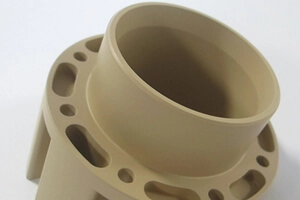
Powder Coated
This is a finish of applying powdered paint to the components and then baking it in an oven, which results in a stronger, more wear- and corrosion-resistant layer that is more durable than traditional painting methods.

Chromate Conversion Coating
Chromate conversion coating is used to improve the corrosion resistance of aluminum and aluminum alloys while keeping their conductive properties. It is also applied as a base layer prior to priming and painting parts.

Plating
Include Nickel Plating, Silver Plating, Gold Plating, Zinc Plating, Chrome Plating, Tin Plating and etc, it is ideal to reduce corrosion, improve the appearance and function of solderability and electrical conductivity.

DLC (Diamond-Like Carbon) Coating
DLC (Diamond-Like Carbon) coating is a hard, wear-resistant coating made of a carbon-rich material that exhibits some of the properties of diamonds.
*Other surface finishes are also available. Learn more about our metal and plastic surface finishing capabilities here.
Why Order CNC Milled Parts From AT-Machining
Rapid Turnaround
Send in your CNC Milled parts order today and experience a painless, streamlined process that will get you quality results with a fast turnaround - guaranteed to reach as quickly as 7 days!
High Accuracy
Our standard CNC tolerance is +/- 0.127mm, and when you use our tolerance configurator, you can expect precision machining to +/- 0.005mm.
A Wide Variety Of Materials
We offer over 60 production grade materials, and take great care to ensure the right material is used for every part.
Perfect Finish
We offer high-quality finishing processes for most CNC Milled parts, including anodizing, polishing and plating, heat treatment, powder coating, DLC coating, and more.
Save Cost
By incorporating state-of-the-art milling machines, streamlining our production processes, and buying our raw materials in bulk quantities, we're able to minimize your expenses by anywhere from 30% to 60%.
Positive Services
Our team guarantees exceptional after-sales service and solutions and takes full responsibility in resolving any potential issues. We never turn a blind eye, but proactively tackle challenges head-on to ensure our customers are satisfied.
We are here to solve your problem and delivery your needs
Gallery of CNC Milling Parts
We machine rapid prototypes and low & large-volume production orders for customers in multiple industries: medical devices, aerospace, automotive, defense, electronics, hardware startups, industrial automation, machinery, marine and robotics, and many more.
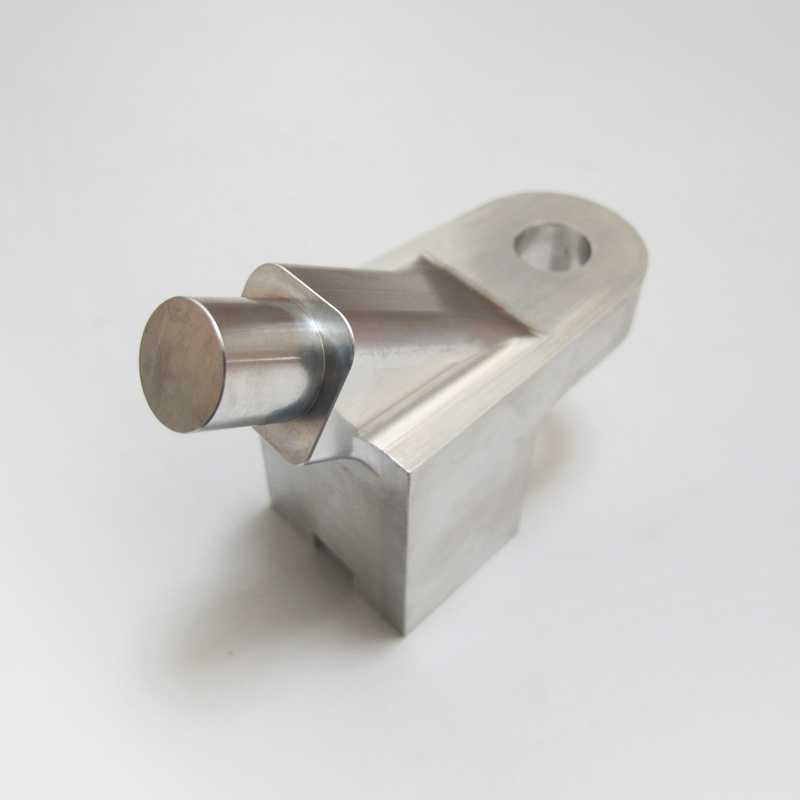

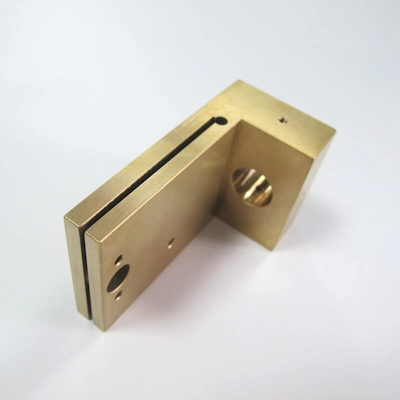
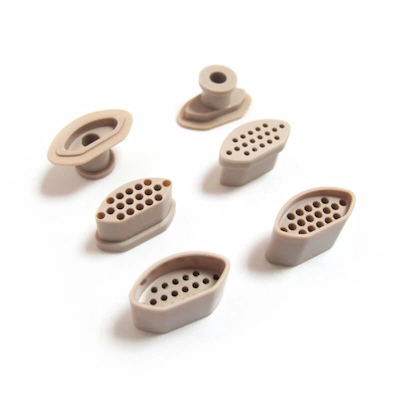
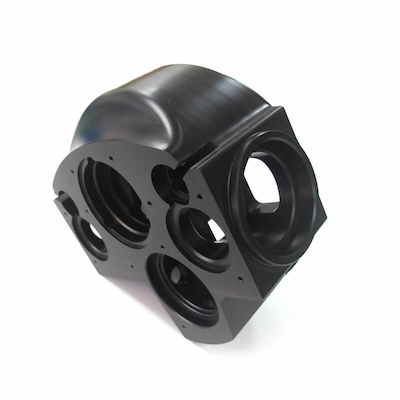
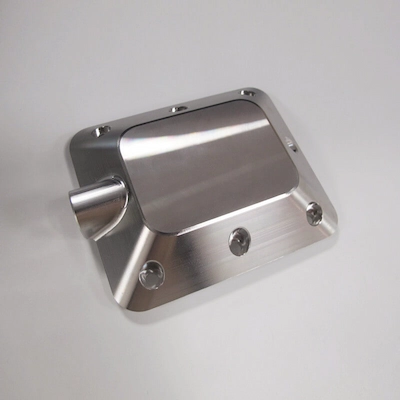
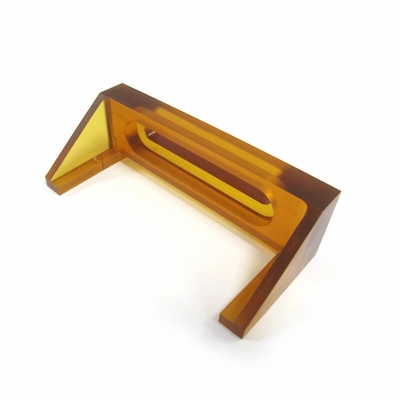


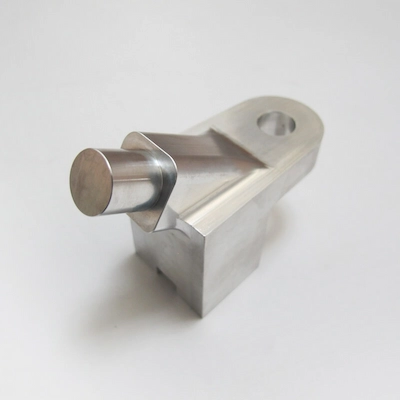
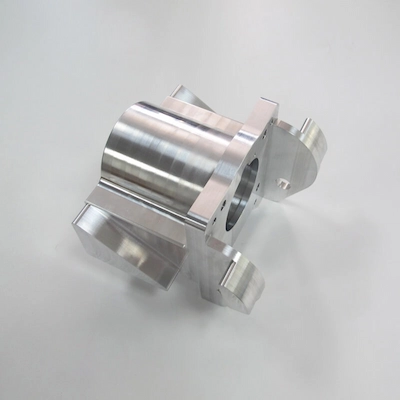

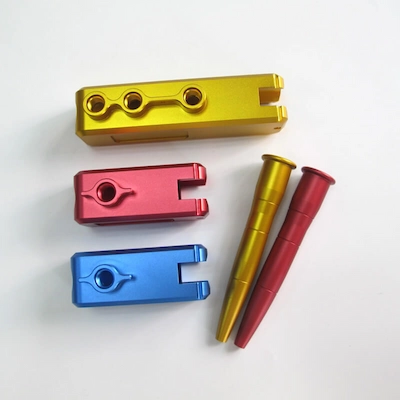
Overview: What is CNC Milling?
The Basics Of CNC Mills
CNC milling is a computer-controlled manufacturing process that uses a rotating cutting tool to remove material from a workpiece to create a desired part or product. CNC stands for Computer Numerical Control, meaning a computer program precisely controls the milling machine’s movements and operations.
The workpiece is securely held in place in CNC milling while the cutting tool moves along multiple axes to shape the material according to the digital design. This process can create complex geometries, intricate details, and high-precision parts.
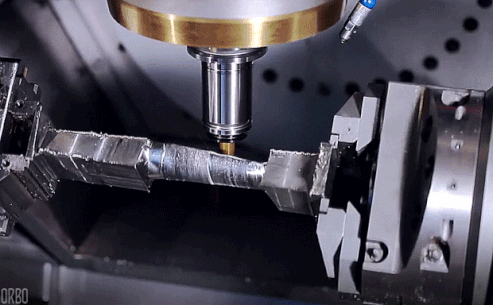
How CNC Milling Works
- Designing: Engineers or designers use computer-aided design (CAD) software to generate a digital 3D model containing dimensions, tolerances, and features of the final product.
- G-coding: The CAD file is converted to machine-readable G-code instructions, providing coordinates, tool paths, and cutting speeds for the CNC milling machine.
- Configure Machine: The CNC machine is prepared with the appropriate cutting tool, secured workpiece, and configure settings according to G-code instructions.
- Execute Milling: The CNC machine follows G-code commands, moving the cutting tool along multiple axes to remove material from the workpiece at controlled rotation and feed rates, achieving the desired shape and dimensions.
- Inspection and Finishing: After milling, the part is inspected for accuracy and quality. Additional processes like deburring, polishing, or surface treatments may be applied to meet final product specifications.

Quality assurance
AT-Machining team measuring the roundness of our customers’ products
Material Inspection: We carefully verify the materials used for your project, ensuring they meet the desired quality standards and match your specific requirements.
Skilled Workforce: Our experienced and highly skilled machinists and engineers closely monitor every step of the machining process, ensuring each part meets the desired tolerances and specifications.
In-Process Inspection: Throughout the manufacturing process, our quality control team conducts regular inspections and measurements to detect and address any deviations or errors promptly.
Final Inspection: Once the parts are machined and finished, our quality control team performs a thorough final inspection, checking dimensions, surface finish, and other required specifications. This guarantees that each part meets your expectations before shipping.
CNC Milling FAQs
Tool offset in CNC milling is like adjusting a pencil or a pen in your hand while drawing or writing. Imagine each tool as a different pencil with various lengths and widths. When you switch between them, you need to make slight adjustments to ensure your drawing or writing remains accurate and consistent.
Similarly, in CNC milling, tool offset is a way to fine-tune different cutting tools’ positions to ensure they follow the right path and depth while machining a part. By adjusting for the differences in tool sizes and wear, the milling machine can create accurate and precise parts, even when using multiple tools with different dimensions.
5-axis CNC machining is a method used to create complex parts using a computer-controlled machine. Imagine it as an advanced robotic sculptor that can move its carving tool in five different directions to shape a piece of material.
In simpler terms, the machine’s cutting tool can move along three basic directions—up and down, left and right, and forward and backward. These movements are referred to as the X, Y, and Z axes. In addition to these three, the tool can also rotate around two of these axes, allowing it to reach more angles and sides of the material. This is where the “5-axis” term comes from, as it represents the three linear movements plus the two rotational movements.
Because of these extra movements, 5-axis CNC machines can create intricate shapes and designs that would be challenging or impossible to achieve with traditional 3-axis machines, which can only move in the X, Y, and Z directions without rotation. This advanced capability allows for faster production, better accuracy, and more complex parts.
In CNC turning, the material (usually a metal or plastic rod) is held and rotated at high speed, while a cutting tool moves to remove the unwanted material, shaping the part. It’s similar to how a potter shapes clay on a spinning wheel. This process is best for creating cylindrical or round parts.
On the other hand, CNC milling is like the sculptor using a chisel to shape a block of material. The material stays stationary while the cutting tool moves around and across it, cutting and carving the material into the desired shape. CNC milling can create more complex shapes and is suitable for both flat and curved surfaces.
A CNC router is designed to cut materials like wood, plastic, foam, and sometimes soft metals like aluminum. It has a large working area and usually moves at higher speeds. The router’s cutting tool, called a spindle, is designed for cutting flat surfaces and intricate patterns, similar to a high-speed carving machine. CNC routers are typically used for woodworking, sign-making, and other applications that require speed and precision on large, flat materials.
The CNC mill is more robust and versatile, capable of handling harder materials like steel, brass, and titanium. It is built to withstand the force and precision required for cutting these materials. The cutting tools in a CNC mill, called end mills, can move in multiple directions, enabling the machine to create more complex shapes and designs.
Metals: CNC mills can work with a range of metals, from softer ones like aluminum and brass to harder ones like steel, stainless steel, and titanium. These machines are often used in industries like automotive, aerospace, and metalworking to create precise metal parts.
Plastics: CNC mills can also shape various plastic materials, including acrylic, PVC, polyethylene, and nylon, among others. These plastics are often used in the manufacturing of medical devices, consumer products, and electronic components.
Composites: CNC mills can handle composite materials made from a combination of different substances, like carbon fiber, fiberglass, and Kevlar. These composites are often used in the aerospace, automotive, and sporting goods industries.
Ceramic: CNC milling machines can precisely shape and cut various types of ceramics, including alumina, zirconia, silicon carbide, and silicon nitride. Due to the brittle nature of ceramics, the milling process requires special attention to factors like cutting speed, tool selection, and cooling to prevent cracking or chipping of the material.















